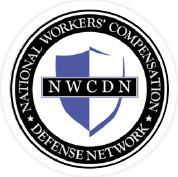OSHA Official Says Industry Court Challenges Unlikely To Delay Silica Rule
| A top OSHA official is pushing back against industry plans to delay implementation of the agency’s new rule limiting silica exposures in workplaces, calling recent industry appeals court challenges to the rule an “expected” consequence of any major OSHA rule, and saying the lawsuits are unlikely to stall OSHA’s implementation of the new standards.
David O’Connor, director of the Office of Chemical Hazards in OSHA’s Directorate of Standards and Guidance, told a May 19 webinar on the rule that while the agency faces more than a half-dozen industry lawsuits challenging its March rule strengthening its decades-old silica standards, the agency is on solid legal footing and officials do not expect the litigation to delay implementation. “[We] and don’t anticipate that this will have any impact on the implementation or implementation dates of the standard,” O’Connor told the webinar, hosted by CPWR – The Center for Construction Research and Training. “[W]e’re confident that the final rule that we published, and the supporting analysis meet OSHA’s legal requirements,” he added. His assertions come as the U.S. Court of Appeals in the District of Columbia Circuit recently consolidated the suite of labor and industry challenges to the rule. And in an April 20 order in the case, North America’s Building Trades Unions, v. OSHA, the court set May 31 deadlines for petitioners to file any procedural motions, statements of issues and other documents. The court set a June 13 deadline for any dispositive motions, as well as identical deadlines for the respondent filings. Some observers believe industry petitioners will soon ask the court to stay the regulation until the litigation is resolved. “It is possible the challengers will request that the Silica Rule be stayed while the legal proceedings run their course,” Louis Thorson, a lawyer at Foley Lardner, said in a recent advisory. In addition to the court challenges, industry groups are also asking lawmakers to delay the rule so OSHA can conduct further analysis. In testimony last month, a representative of the National Association of Homebuilders urged a House panel to block the silica rule until OSHA reconsiders the measures’ impacts to small businesses. The rule, issued in late March, is OSHA’s first overhaul of its silica standards in more than 40 years. It strengthens the current permissible exposure limits (PEL) for crystalline silica dust, which is blamed for silicosis and other illnesses following chronic exposures, from 250 micrograms per cubic meter (ug/m^3) to 50 ug/m^3 over eight hours. OSHA has set compliance deadlines of June 23, 2017 for the construction industry and a year later for a separate standard for general industry and maritime. The agency says the rule generally requires employers to use engineering controls (such as water or ventilation) to limit worker exposure to the PEL; provide respirators when engineering controls cannot adequately limit exposure; limit worker access to high exposure areas; develop a written exposure control plan, offer medical exams to highly exposed workers, and train workers on silica risks and how to limit exposures. But homebuilders and foundry industry representatives argued in their April 19 testimony before a House workforce protections subcommittee that the rule poses significant burdens and that certain required methods for limiting exposure may be impractical or unsafe. Guidance Documents During the webinar, O’Connor defended the rule and said OSHA is working on guidance documents to help companies comply. OSHA PELs under the old standard are decades-old and difficult to understand and apply, O’Connor said. “There is a great deal of evidence showing the previous PELs do not adequately protect workers,” he said. The rule seeks to protect more than 2.3 million workers, 87 percent of whom are in construction, O’Connor said, adding that workers inhaling crystalline silica face risk of respiratory illnesses, ranging from silicosis and emphysema to lung cancer. OSHA estimates the new rule will prevent more than 600 deaths each year, and 900 cases of silicosis annually. O’Connor also said that OSHA is working on guidance documents and worker training materials to assist companies in complying with the new standard. The agency plans to issue small entity compliance guides for both the construction and general industry standards in June. — Dave Reynolds () |

